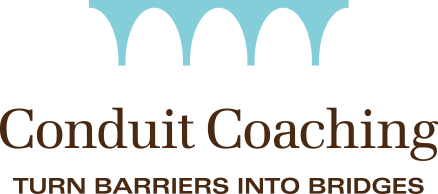Resources
The Leading Edge
Your Guide to Turning Barriers into Bridges
Living on the leading edge often takes us through some not-so-comfortable growth spurts, which may involve replacing counterproductive habits with healthy new ones. Changing habits isn’t easy; it’s a process that involves rewiring our brains and learning new patterns.
All this work can feel like a big fat barrier. And it doesn’t help to hear our inner saboteurs screaming: “I can’t do that.” “I don’t know how.” “It’s too hard.”
What to do?

Conscious Competence Learning Model
Guess what? Self-doubt is a normal part of the process of developing new habits. So take it as a marker you’re on track. I like to use a powerful tool, called the “Conscious-Competence” learning model, to help measure where my clients are and where they want to go as they change habits. It outlines four stages:
Quadrant 1: Unconscious Incompetence We don’t know what we don’t know. At this stage, we’re blissfully unaware of our incompetencies.
Quadrant 2: Conscious Incompetence We know that we don’t know. Often it’s a rude awakening that causes us to realize, “Uh-oh. I don’t know how to…”
Quadrant 3: Conscious Competence We know! We’re aware of our new skills and we’re concentrating on developing them.
Quadrant 4: Unconscious Competence It’s natural! Our new skills have become habits we don’t even have to think about.
An Example: Rob changes his Mind
Here’s an example. My client, Rob, had built a thriving business, a talented stable of professionals and a great reputation within his industry. But all that time, he never knew his default mode of thinking was based on fear. Rob was living in Quadrant 1: he didn’t know what he didn’t know.
Eventually, despite his success, Rob realized he felt burned out, riddled with self-doubt, and driven to continually prove himself. In a moment of inspiration, he decided he needed to switch to success-based thinking. But he didn’t really know what that meant or how to make the change. Rob had moved into Quadrant 2: he’d become conscious of his incompetence.
That’s where coaching came in. Rob and I discovered a few strategies that helped him progress through Quadrant 3, where he consciously practiced his new skills, and on to Quadrant 4, where Rob became a habitual success thinker, unconsciously competent in his healthy new habit. The pay-off? Confidence, inner peace, and — not surprisingly — even greater success than before.
Four Simple Secrets to Success
1. Relax; you’re normal! We all have blind spots. Rob discovered he could choose whether to ignore his, blame it on someone else, or use it to show him who he really wanted to be.
2. Define your target. Turns out Rob was quite adept at success-thinking in some parts of his life, which helped clarify what he was after overall.
3. Figure out what helps you learn. Thinking about how he’d mastered new skills before, Rob found he already possessed a repertoire of successful learning strategies.
4. Practice, practice, practice. Stumbles are a normal part of any learning process. It’s getting up and starting again that turns toddlers into Olympic runners. So Rob focused on bite-sized goals, which multiplied his success over time. And rather than dwelling on his stumbles, he celebrated his recoveries as evidence of constructive changes under way.
Your turn
What strategies move you through to unconscious competence? I’d love to hear from you. Write me@conduitcoaching.com.

